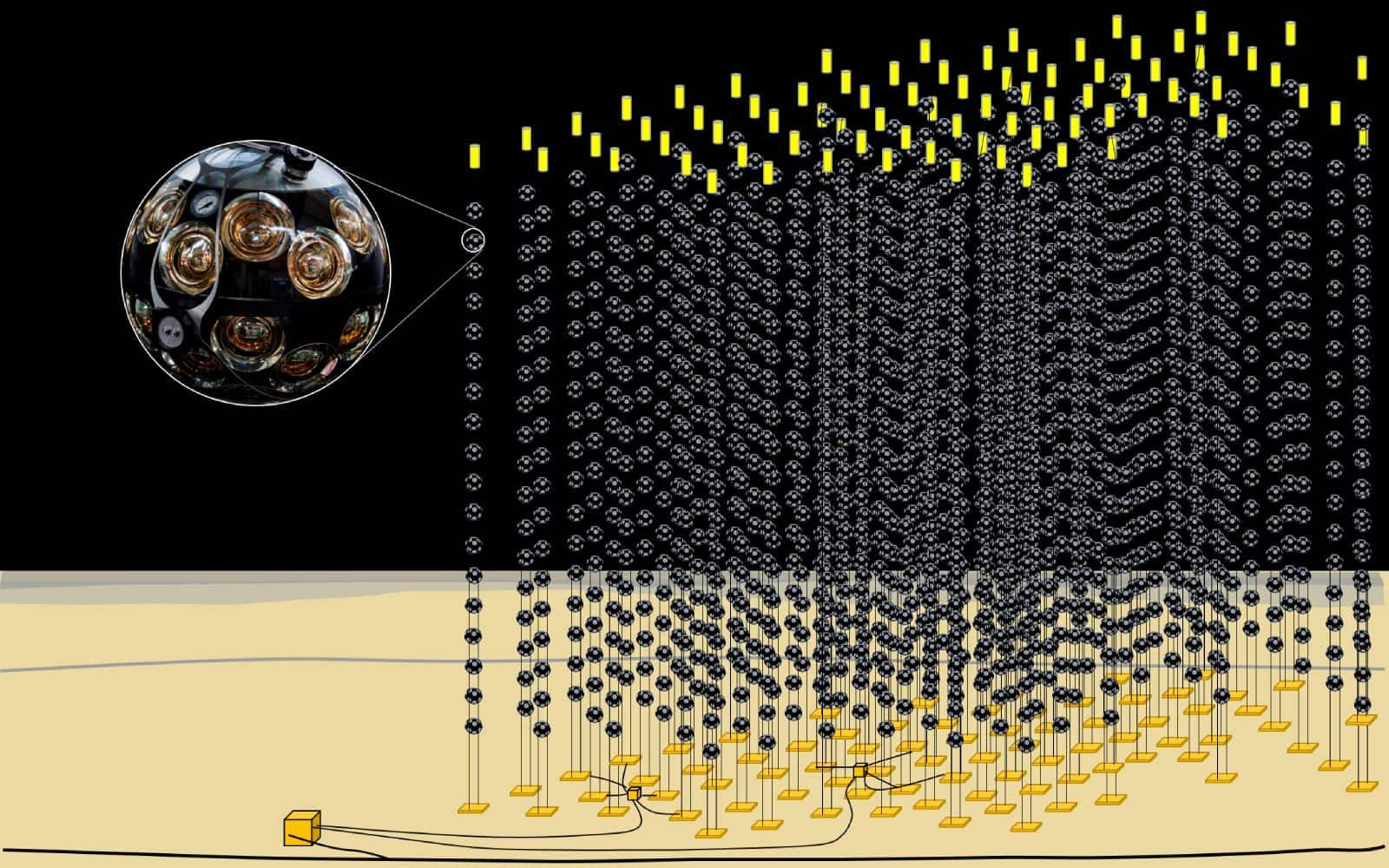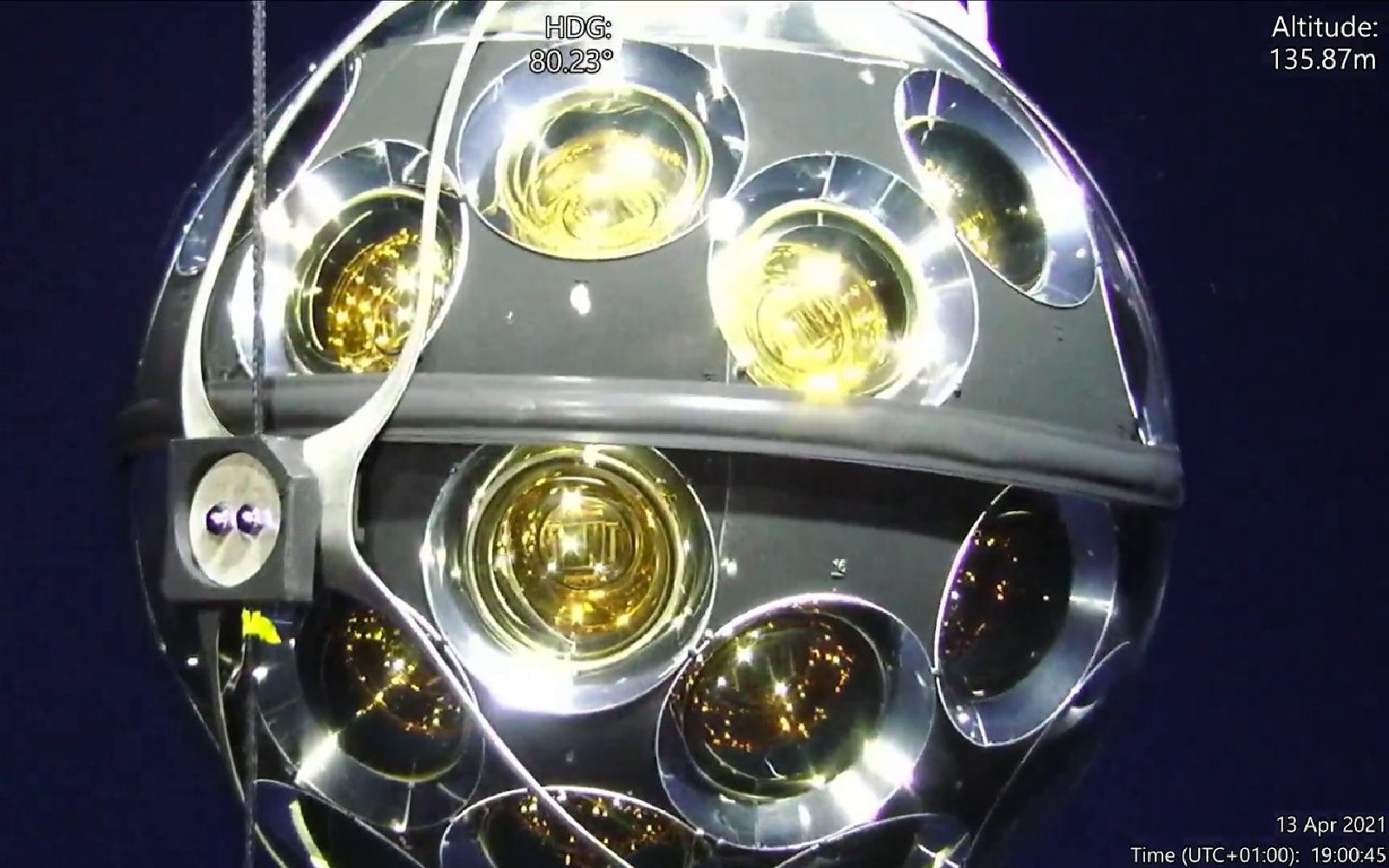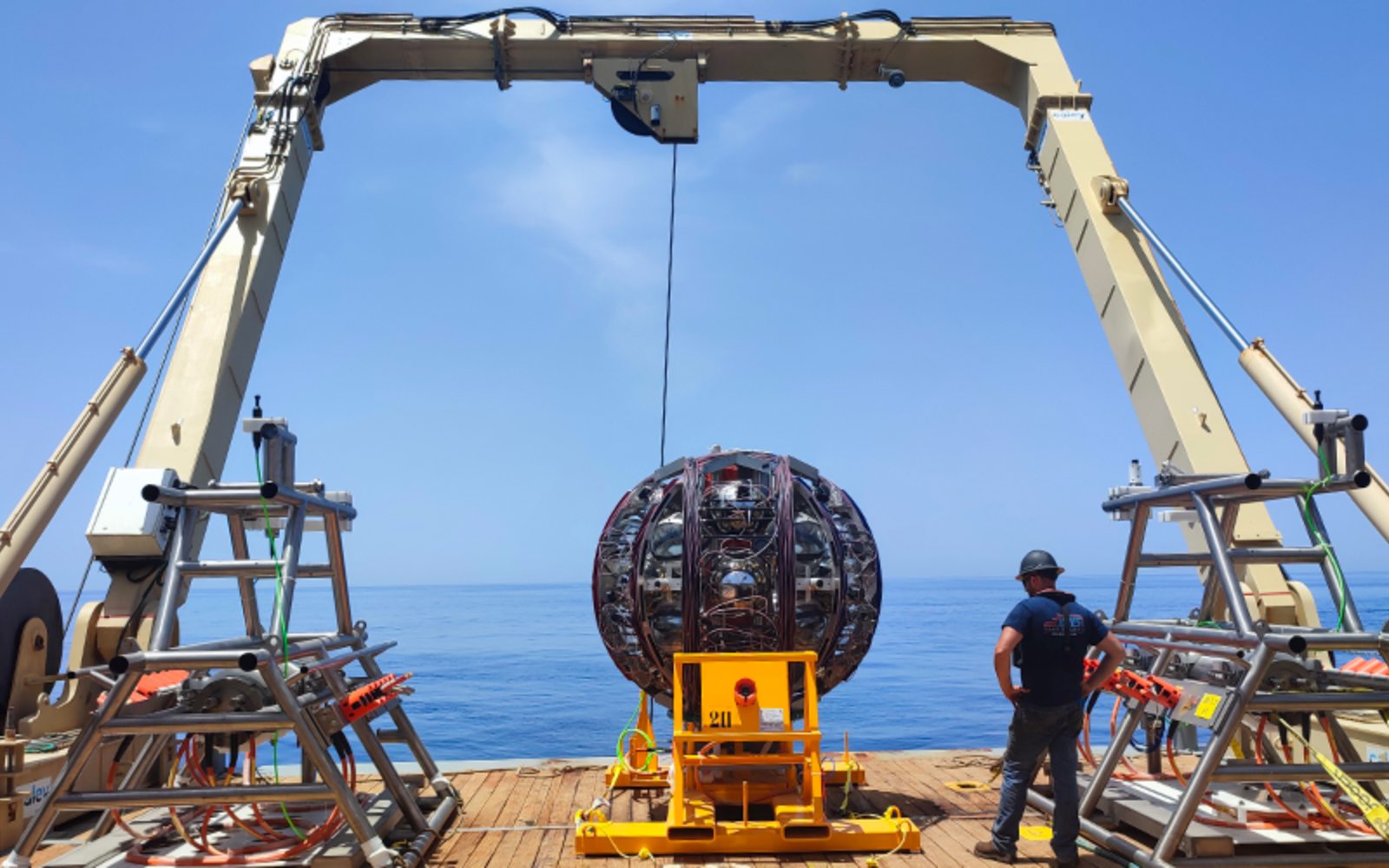The underwater infrastructure
The ARCA detector consists of an array of strings, called detection units (DU), anchored to the seabed. In the final configuration, ARCA will include approx. 230 detection lines distributed at 100 mt of distance one from each other with a height of nearly 700 mt. Each detection line hosts nearly 560 ultrasensitive light detectors (photomultipliers) installed on 18 optical modules distributed vertically along each string. Currently (February 2025) 57 detection lines are active and taking data, equipped with a total of more than 30,000 photomultipliers.
The ORCA detector, instead, will include 115 lines of detection Units distributed at 20 mt of distance one from each other and with a height of nearly 200 mt.
Indeed, the two devices are optimised for very different experimental purposes: ARCA (Astronomy Research with Cosmic rays in the Abysses) is aimed at searching for cosmic neutrinos up to extreme energies, while ORCA (Oscillation Research with Cosmic rays in the Abysses) is dedicated to the study, with lower energy events, of so-called neutrino oscillations.


